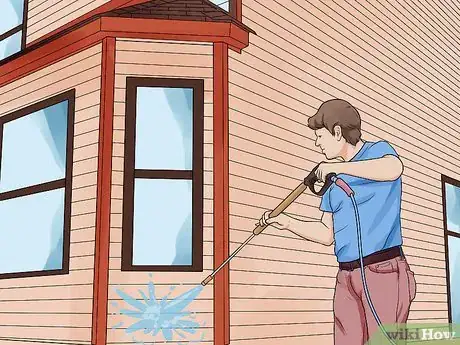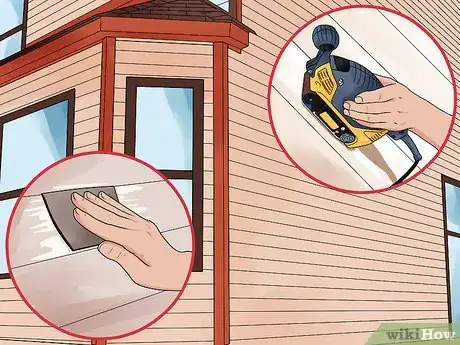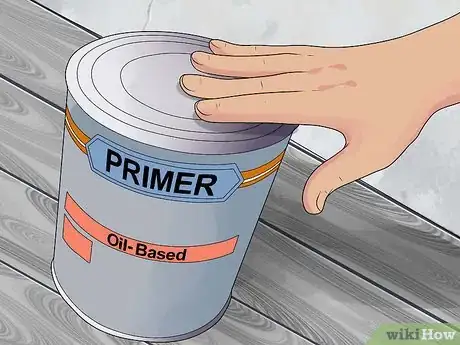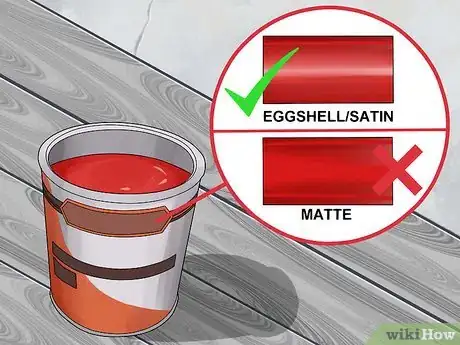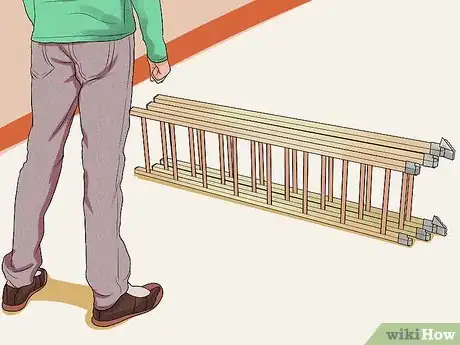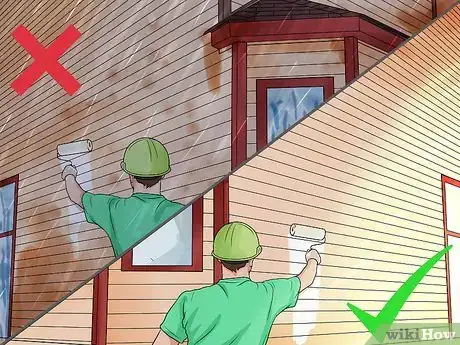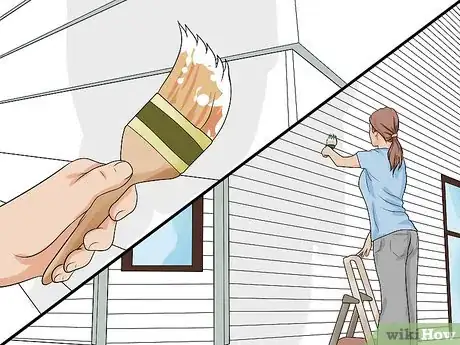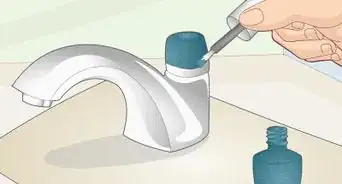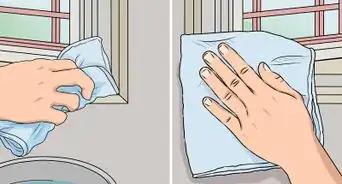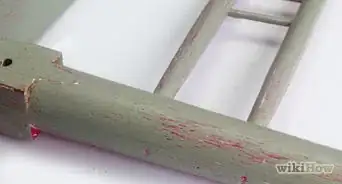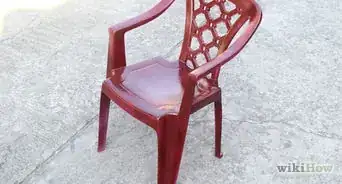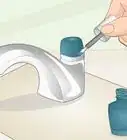This article was co-authored by Patrick Coye. Patrick Coye is the owner and operator of Patrick’s Painting & Home Improvement in Alexandria, Virginia. With over 15 years of experience in residential construction, Patrick specializes in painting, wallpaper removal/installation, drywall, staining decks and fences, and kitchen cabinetry painting. To date, Patrick and his team have painted over 2,000 houses and stained over 800 decks. Patrick's Company won a "Top Job" award from the American Painting contractor magazine in 2020.
There are 12 references cited in this article, which can be found at the bottom of the page.
wikiHow marks an article as reader-approved once it receives enough positive feedback. This article received 21 testimonials and 86% of readers who voted found it helpful, earning it our reader-approved status.
This article has been viewed 672,113 times.
Instead of replacing old aluminum siding, it is often more cost effective to repaint it. It's a very straightforward process and, provided you can set aside preparation and painting time, it is something most homeowners can do without professional assistance.
Steps
Preparing the Siding
-
1Ensure that you're dealing with aluminum. Painting vinyl or another metal material other than aluminum will be greatly different, so it's important to be sure of what you're about to paint.
- Galvanized steel should not be painted with oil-based paint. Many paint manufacturers offer multi-purpose enamel or a direct to metal paint.
- Determine if the siding has been previously painted and what kind of paint has been used. If possible, bring a sample to a professional.
- Aluminum can be difficult to tell apart from vinyl if brand new. Check for cracks or dings in the siding. If the siding is cracked or broken, it is vinyl. Dings or bumps are an indication of aluminum. [1]
- Try tapping on the siding because aluminum sounds hollow and lightly metallic. [2]
- Use a magnet to determine if your siding is steel versus aluminum because magnet will stick to an steel siding but not aluminum. steel will also show red-brown rust. [3]
-
2Clean the siding. It's best to use a power washer, angling the spray in the direction rain would hit the house as washing from the bottom up can cause unnecessary damage to the siding.[4] If you choose to use any chemicals, complete a final rinse to remove remaining materials because residual chemicals can be damaging to your painting process.
- If you've got stubborn stains, try cleaning with a biodegradable laundry detergent by mixing approximately ¼ cup (60 milliliters) detergent with 4 gallons (16 litres) of water.[5]
- Rub your hand along the siding when it is dry to check for chalking, which is common. If a powdery substance comes off, don't be alarmed because this is chalking, which is normal in paint made for aluminum substances. This powdery substance acts as a self-cleaner for the siding. Simply choose a detergent containing TSP (trisodium phosphate) to remove the chalking.[6]
- Repair any damaged siding by banging out any dents or sags or removing unsalvageable pieces altogether.
- If there's any peeling paint on the aluminum, use a scraper to remove it.[7]
Advertisement -
3Sand down the siding. Use rough sandpaper (80-120 grit) to start your sanding. Do a rough once over while making sure to keep your motion in the same direction. Move up to a more fine sandpaper (220 grit) and do a second pass over the siding Make sure to avoid etches and special molding, so that you don't damage them. Give your siding a sweep afterwards, from the top down, to ensure you've removed all the metal filings and any chipped paint.
- Sanding the siding will give it a little texture that the primer and paint can adhere to.[8]
- You can also use wire brushes to scuff the surface of the aluminum, if you'd prefer.[9]
- Depending on how big the area is that you want to paint, you may want to use a power sander. If you use a power sander, be cautious when applying pressure to prevent any damage to the siding.
Picking up the Right tools
-
1Get a power/ pressure washer for cleaning the siding. Whether you ask your friends or need to rent one, there are cost effective ways to acquire a power washer, especially if you only plan to use it once.
- Power washers can be rented inexpensively at a hardware store, so contact your local stores to compare prices and availability.
- Pressure is typically measured in water per square inch which generally ranges from 2000psi to 2800psi for a gas powered washer vs 1300psi to 1700psi for an electric one. Higher pressure means higher power but it also means more noise, therefore, be aware of the disturbance you may create for your neighbours.[10]
- If they don't come with the rental, don't forget to use the proper safety tools that coincide with power washer use such as waterproof boots, goggles, gloves and ear protection.
-
2Choose the correct primer. Look for an oil-based primer. The oil-base will absorb any chalking pigment and acts as an extra layer of protection from the outside elements.[11]
- You can also use an acrylic primer which will act as a strong base while sticking to metal and not reacting to any possibly-missed oxidation on the siding. Be cautious when using an acrylic primer, which can only be paired with acrylic paint.
- Avoid latex primer since it generally contains ammonia, which reacts over time with aluminum to form microscopic gas bubbles and can lead to premature failure of the primer, removing the paint from the surface or the siding.
-
3Choose the right paint. Select a paint meant for aluminum that's acrylic exterior grade paint. This is an all-seasonal paint, which will hold up better, cover better and is less likely to fade.
- Stay away from high gloss paints which reflect the sun's glare, unless you live in a hot area and want to do this deliberately.
- Try to select an eggshell or satin finish because it is more flattering for your home as it wears better than a matte finish.
-
4Choose your painting method. Whether you use a brush, roller or sprayer, choose beforehand and know how to use your tool efficiently. Brushes, while most inexpensive, are the most time-intensive way to paint your siding. In contrast, using a spray machine will be the most time-effective way but also the most expensive. The happy medium would be using a roller; not only are they moderately priced, but they can also be used with relative ease.
- When working with brushes or rollers, stick with synthetic fibre brushes or a lambswool roller. This will give your siding a smooth finish.
- If you're using a sprayer, use an airless sprayer with a .017 gun tip for a smooth application. While you can rent a professional machine in most areas, it's best to compare prices and availability.
-
5Determine if you'll be needing a ladder. Both paint brushes and sprayers will need the added height associated with using a ladder. Straining to get the height and avoiding use of a ladder will leave paint splotchy and uneven.
- Splurge and pick up a handle extension for your roller. With ranch-style homes, you'll be able to forgo a ladder and use the handle extension. If you have a multiple story home, you'll skip some steps on your ladder when reaching for the top of your siding.
Painting the Siding
-
1Apply products on the right day. When priming and painting, weather must be considered. Each product will state acceptable temperature ranges but a good rule of thumb is to not paint in weather colder than 50 F (10 C) or on rainy days. Moisture from dew or rain will ruin a new application of paint.
- When priming or painting, begin on a portion that is shaded from the sun as painting in direct sunlight can cause cracks and bubbles from drying too fast.[12] In turn, any bubbles or cracks will have to be sanded out after drying.
-
2Prime the siding and allow full drying time. After coating your roller in primer, roll quickly but with even pressure, along the panel of siding. Next, roll backwards in the opposite direction. This is to ensure an even and complete coat has been applied. Applying primer should only take a few seconds per foot applied. Apply at least two coats of primer sparingly to the siding to ensure proper coverage.[13]
- Don't worry if you can see the metal or previous paint through the primer. Your coat should be thin enough to dry fast but still visible to the eye.
- Always begin priming at one end of the siding. By working left to right, or right to left, rather than starting in the middle, the primer will dry evenly as you work. This is a great way to avoid visible lines dried within your progress.
- Allow full drying time between coats. If you don't wait long enough, peeling or bubbling can occur. Full drying time will vary between brands, however, a four hour drying time is a good rule of thumb.
- Since it is to be covered up, primer can be great practice for airbrushing techniques.[14]
-
3Paint the siding. Paint in long, even strokes, making sure not to overdo it. If your paint is dripping then you have too much.
- Work from the top down to eliminate dripping paint from ruining your hard work.
- If your siding is horizontal, paint left to right. If vertical, paint up to down. This ensures even coats and will prevent you from missing any spots. [15]
- As a rule of thumb, paint takes two hours to dry.[16] To test the dryness of your paint, touch the siding with your finger in an inconspicuous area. If the paint no longer feels tacky or sticky, it's completely dried. This means you're ready for your second coat.
- Plan your breaks. Any siding that is partially painted and left to dry is at risk for lasting, visible lines. This can be avoided by finishing each individual piece of siding as you go.
-
4Apply a second coat of paint. If any bumps are present within the first coat, they can be removed by an additional sanding before the second application of paint. Be gentle when removing impurities from the first coat because if you sand too hard you'll be back at square one. Always check that that the initial paint is dried before continuing on with the second coat.
- You don't want to strip off any of the paint while removing impurities. If it happens, though, dab on some primer to cover the raw aluminum.
- While a second coat of paint isn't a necessity, it adds a look of professionalism. The second coat also increases the durability of the paint, overall increasing the value of your new siding.[17]
- If you're seeing lines in your first coat, it's because you're painting too slow. A line in the color is from the paint drying and being over painted. To eliminate the line, try working in a smaller area while keeping your edges wet and painting your siding in panels without pausing in between strokes.[18] Painting your second coat carefully will allow you to hide any lines from the first coat.
Expert Q&A
Did you know you can get expert answers for this article?
Unlock expert answers by supporting wikiHow
-
QuestionDo I need to prime aluminum siding before painting?
 Patrick CoyePatrick Coye is the owner and operator of Patrick’s Painting & Home Improvement in Alexandria, Virginia. With over 15 years of experience in residential construction, Patrick specializes in painting, wallpaper removal/installation, drywall, staining decks and fences, and kitchen cabinetry painting. To date, Patrick and his team have painted over 2,000 houses and stained over 800 decks. Patrick's Company won a "Top Job" award from the American Painting contractor magazine in 2020.
Patrick CoyePatrick Coye is the owner and operator of Patrick’s Painting & Home Improvement in Alexandria, Virginia. With over 15 years of experience in residential construction, Patrick specializes in painting, wallpaper removal/installation, drywall, staining decks and fences, and kitchen cabinetry painting. To date, Patrick and his team have painted over 2,000 houses and stained over 800 decks. Patrick's Company won a "Top Job" award from the American Painting contractor magazine in 2020.
Painting Specialist
-
QuestionWhat thickness of roller brush do I need to use for my aluminum siding?
 Mark SpelmanMark Spelman is a General Contractor based in Austin, Texas. With over 30 years of construction experience, Mark specializes in constructing interiors, project management, and project estimation. He has been a construction professional since 1987.
Mark SpelmanMark Spelman is a General Contractor based in Austin, Texas. With over 30 years of construction experience, Mark specializes in constructing interiors, project management, and project estimation. He has been a construction professional since 1987.
Construction Professional
-
QuestionHow do you paint aluminum siding?
 Patrick CoyePatrick Coye is the owner and operator of Patrick’s Painting & Home Improvement in Alexandria, Virginia. With over 15 years of experience in residential construction, Patrick specializes in painting, wallpaper removal/installation, drywall, staining decks and fences, and kitchen cabinetry painting. To date, Patrick and his team have painted over 2,000 houses and stained over 800 decks. Patrick's Company won a "Top Job" award from the American Painting contractor magazine in 2020.
Patrick CoyePatrick Coye is the owner and operator of Patrick’s Painting & Home Improvement in Alexandria, Virginia. With over 15 years of experience in residential construction, Patrick specializes in painting, wallpaper removal/installation, drywall, staining decks and fences, and kitchen cabinetry painting. To date, Patrick and his team have painted over 2,000 houses and stained over 800 decks. Patrick's Company won a "Top Job" award from the American Painting contractor magazine in 2020.
Painting Specialist Start by sanding the surface with 80-120 grit sandpaper or wire brushes, which will give the primer and paint something to hold on to. Then, prime the aluminum with an oxidizing primer made specifically for metal, which will help inhibit rust from forming in the future. Then, go over that with the top coat of your choice.
Start by sanding the surface with 80-120 grit sandpaper or wire brushes, which will give the primer and paint something to hold on to. Then, prime the aluminum with an oxidizing primer made specifically for metal, which will help inhibit rust from forming in the future. Then, go over that with the top coat of your choice.
Warnings
- Paint and primer fumes can be hazardous to your health, so wear a protective mask to avoid the fumes.⧼thumbs_response⧽
- Depending on how large your home is, make sure you have someone spotting you when using a ladder.⧼thumbs_response⧽
- If you've never worked with a pressure washer or power sander before, be sure to follow all safety guidelines and practice before fully initiating the tool.⧼thumbs_response⧽
Things You'll Need
- Paint
- Oil-based primer
- Sandpaper
- Paint rollers
- Roller extension handle
- Pressure washer
References
- ↑ http://www.nachi.org/aluminum-siding-inspection.htm
- ↑ http://www.nachi.org/aluminum-siding-inspection.htm
- ↑ http://www.nachi.org/aluminum-siding-inspection.htm
- ↑ http://www.nytimes.com/1997/03/23/realestate/restoring-aluminum-siding.html
- ↑ http://www.howtocleanstuff.net/how-to-clean-aluminum-siding/
- ↑ http://www.dummies.com/how-to/content/cleaning-mildew-and-chalk-from-exterior-surfaces-f.html
- ↑ Patrick Coye. Painting Specialist. Expert Interview. 22 July 2020.
- ↑ Patrick Coye. Painting Specialist. Expert Interview. 22 July 2020.
- ↑ Patrick Coye. Painting Specialist. Expert Interview. 22 July 2020.
- ↑ http://www.consumerreports.org/cro/news/2015/05/pros-and-cons-of-gas-and-electric-pressure-washers/index.htm
- ↑ http://www.nytimes.com/1997/03/23/realestate/restoring-aluminum-siding.html
- ↑ http://www.benjaminmoore.com/en-us/for-your-home/exterior-painting-tips
- ↑ https://www.overclockers.com/how-to-paint-steel-aluminum-plastic-and-acrylic/
- ↑ http://www.homeadvisor.com/article.show.Exterior-Painting-Techniques.8598.html
- ↑ http://www.bobvila.com/articles/painting-aluminum-siding/#.VdVYqotjo20
- ↑ http://salvagedinspirations.com/paint-dry-and-paint-cure/
- ↑ http://www.bobvila.com/articles/painting-aluminum-siding/#.VdVYqotjo20
- ↑ http://www.familyhandyman.com/painting/techniques/paint-roller-techniques-and-tips/view-all
About This Article
If you need to paint aluminum siding, choose a day when the weather is at least 50°F (10°C) and dry, since moisture from rain or dew will ruin a new paint job. Coat your roller in primer and roll quickly and evenly along the panel of siding, then roll backward in the opposite direction. Allow the first coat of primer to dry completely, which usually takes about 4 hours, then apply another coat and let it dry as well. When it’s time to paint, work in long, even strokes, and work from the top down so drips don’t affect the finished look. To learn how to fix bubbles in your paint or primer, read on!

